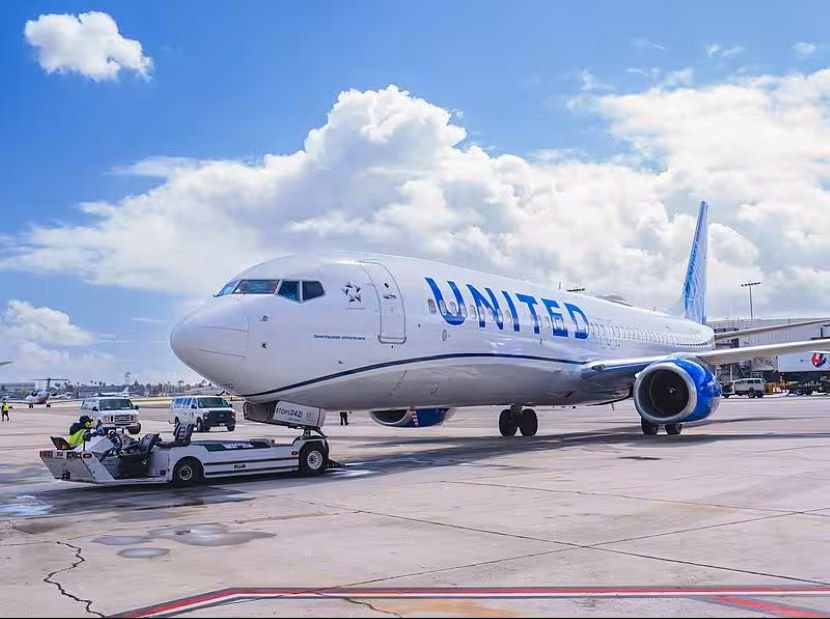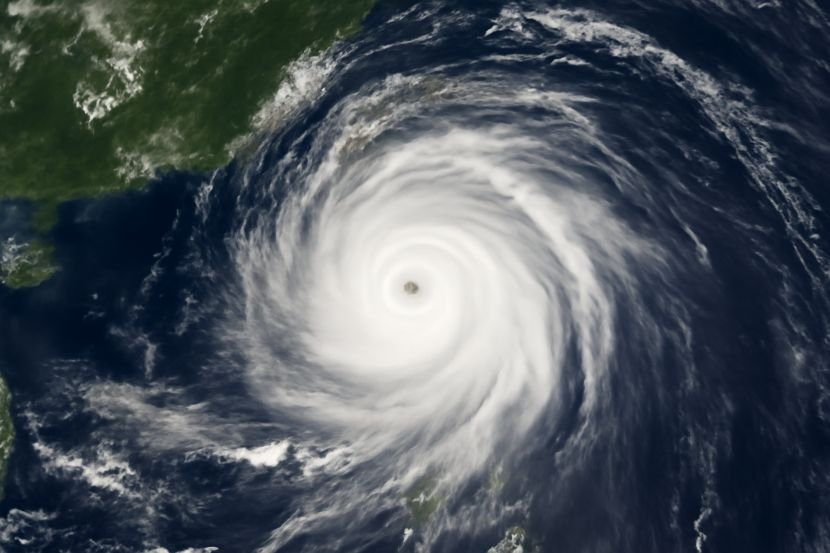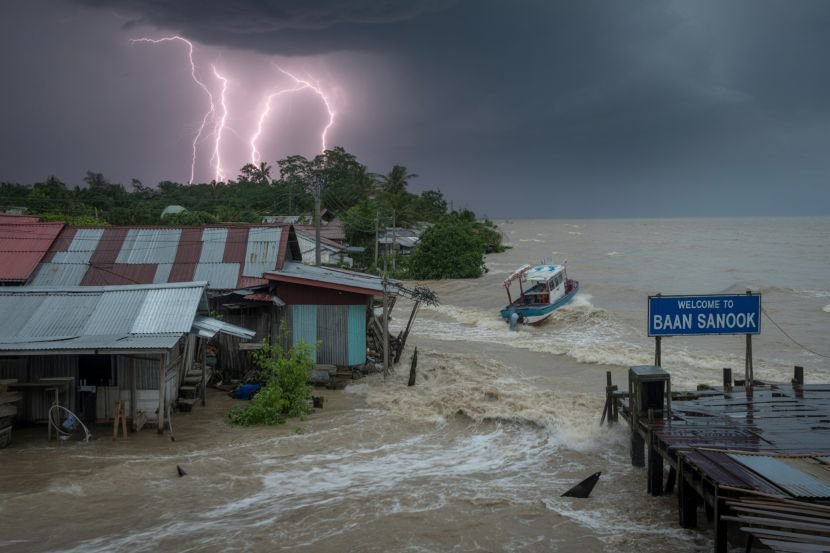Published on
September 24, 2025

Typhoon Ragasa has swept across Taiwan, Hong Kong, the Philippines, and China, engendering extensive disruption and rapid deformation of regional itinerary arrangements owing to the exceptional intensity of the storm. As the cyclone traverses the area, administrations have activated comprehensive emergency protocols, including the purging of air traffic, the cessation of ferry operations, and the lockdown of critical intermodal nodes. With sustained gusts reported in excess of 220 km/h, primary air terminals in Hong Kong, Manila and Taipei have curtailed all flight activity, precipitating an avalanche of cancellations and extended delays. Such an extraordinary event has catalyzed systemic instability in both air and maritime transport sectors, compelling affected passengers to undertake immediate and often complex revisions to their itineraries throughout Asia.
Super Typhoon Ragasa, one of the most formidable storms in recent history, is wreaking havoc across several countries in Asia, including the Philippines, Taiwan, Hong Kong, and mainland China. As the storm intensifies, local authorities have been forced to implement emergency measures, including evacuations, flight cancellations, and ferry suspensions, disrupting air and sea travel in some of the region’s most important transport hubs.
The typhoon, which began as a tropical depression on September 18, has quickly escalated to super typhoon status, with winds of up to 220 km/h. As it approaches the coast of Guangdong province in southern China, its impact has already been felt across Taiwan, Hong Kong, and the northern Philippines, creating widespread disruptions to both aviation and maritime services.
Widespread Flight Disruptions Across the Region
Hong Kong International Airport, a major global aviation hub, has been forced to suspend passenger flights for 36 hours, from 8 p.m. on September 23 until 8 a.m. on September 25. This closure will have significant consequences for global flight schedules, with airlines beginning to cancel flights as early as the evening of September 23. Approximately 700 flights have been disrupted, including more than 500 Cathay Pacific cancellations alone, according to reports.
Other international airlines operating in the region have followed suit, advising passengers to stay updated on their flight status. This includes offering flexible ticket policies and providing alternative routes to help mitigate the effects of the storm. With the airport closure expected to last for over a day, passengers should expect a ripple effect on flight schedules that will continue for several days.
Shenzhen and other parts of mainland China have also been affected, with all flights in Shenzhen expected to be halted by the evening of September 23. Provinces like Guangdong have implemented evacuations and suspended ferry services to safeguard residents from the violent storm conditions. Flight suspensions are expected to spread further as the storm makes its way toward southern China.
Taiwan Faces Severe Travel Disruptions
In Taiwan, the government has taken swift action, canceling all flights to several islands, including Penghu, Kinmen, and Matsu. The Ministry of Transportation and Communications has also suspended 88 ferry services across 13 routes, significantly disrupting maritime travel. Taiwan’s central and northern regions, especially those near the Taiwan Strait, are bearing the brunt of the storm, with strong winds and high seas affecting both air and sea transport.
Taiwan’s response has been focused on ensuring public safety and minimizing the potential for loss of life. The suspension of ferry operations, in particular, is a precautionary measure to prevent vessels from being caught in dangerous conditions. Travelers planning to visit Taiwan or depart from its ports are advised to keep in close contact with local authorities for the latest updates and alternative travel arrangements.
Philippine Authorities Urge Caution for Air and Sea Travelers
In the Philippines, Super Typhoon Ragasa has had a disruptive effect on both domestic and international travel. Several domestic flights, particularly those serving northern areas such as Laoag, Tuguegarao, and Basco, have been canceled due to the storm’s impact. While major airports in Manila and Clark remain open, delays and cancellations are anticipated as the typhoon progresses through the region.
The storm’s impact is not limited to air travel. Inter-island ferry services, which are vital for travel between the country’s numerous islands, have also been suspended. This has left many passengers stranded at ports, adding to the travel chaos. Authorities have warned that the storm could cause further disruptions to maritime services, particularly in the northern provinces.
The government has initiated evacuations in several coastal areas as a precautionary measure, with a focus on ensuring the safety of residents and travelers alike. As the typhoon moves into the South China Sea, additional warnings have been issued for the southern provinces of the Philippines, particularly those located near the coastlines.
Ongoing Impact on Global Flight Schedules
The ongoing disruptions caused by Super Typhoon Ragasa are expected to have a domino effect on global flight schedules. Hong Kong International Airport’s prolonged closure, combined with the suspension of flights across mainland China, Taiwan, and the Philippines, will affect numerous airlines and passengers across multiple continents.
Travelers flying through or to these regions should be prepared for extended delays. Many airlines have implemented flexible ticket policies, allowing passengers to rebook or adjust their travel dates without incurring additional fees. However, with the situation continuing to evolve, it is critical for travelers to check with their respective airlines frequently for the latest information on flight statuses.
As the storm progresses, authorities in Hong Kong, Taiwan, and China have emphasized the importance of staying updated with official communications. Passengers are strongly advised to use airline apps and official websites to manage their bookings and avoid long queues at airports. Some airlines are also offering automated notifications to keep travelers informed about any changes to their itineraries.
Preparation and Contingency Measures for Sea Travel
Ferry services have been suspended across Taiwan, Hong Kong, and the coastal provinces of Fujian and Guangdong in China, where the storm is expected to make landfall. Maritime safety authorities have issued warnings about the danger of high waves and strong winds, urging travelers to stay off the waters during the highest alert periods.
In Taiwan, all ferry routes to the outlying islands have been suspended, while local authorities are preparing for the possible extension of these measures to other regions as the storm intensifies. In Hong Kong, ferry operations have been halted in the harbor, with services expected to resume only once the typhoon passes and conditions improve.
Travelers planning to use ferry services in any of the affected regions are advised to monitor local weather conditions closely and adjust their travel plans accordingly. Those who have already made ferry bookings should contact the operators for alternative arrangements or possible refunds.
The Continuing Threat of Typhoon Ragasa
Super Typhoon Ragasa’s rapid escalation has been a reminder of the unpredictable and devastating nature of tropical storms. Experts have pointed out that the timing and path of this typhoon have caused significant disruptions to four of the most vital aviation markets in Asia—Hong Kong, Taiwan, the Philippines, and mainland China—simultaneously. This rare alignment of disruptions has compounded the challenges faced by travelers, airlines, and local governments.
As the typhoon continues to develop, officials are bracing for additional damage in the region. The storm’s impact on the aviation and maritime industries will likely be felt for several days, with a prolonged recovery period expected for affected airports and ferry terminals. Furthermore, the storm’s widespread nature highlights the importance of regional cooperation in disaster response, particularly in sectors as critical as transportation and tourism.
Final Thoughts: What Travelers Need to Know
As Super Typhoon Ragasa makes its way across Asia, travelers in the affected regions are urged to remain vigilant and flexible. With airports, airlines, and ferry services all facing disruptions, staying informed and prepared will be essential to minimizing the impact of the storm on travel plans.
It is recommended that travelers with bookings in the affected areas between September 23 and 25 monitor their flight statuses closely and make any necessary changes through their airline’s app or website. Similarly, those relying on ferry services should check for updates on service availability and be prepared for potential delays.
Typhoon Ragasa has made landfall across Taiwan, Hong Kong, the Philippines, and mainland China, resulting in sweeping disruption of regional travel systems, including airport closures, widespread flight cancellations, and temporary suspension of ferry services. The storm’s extraordinary intensity and the subsequent emergency countermeasures have severely affected transport infrastructure at key Asian travel nodes.
Given Ragasa’s prevailing track, the sustained effects are expected to propagate across the international transport network, constricting itineraries both to and from Asia’s major gateways. Ongoing advisories, in tandem with compliance to instructions from official agencies, will aid affected travelers in mitigating the extraordinary operative interruptions resulting from this exceptional weather event.









